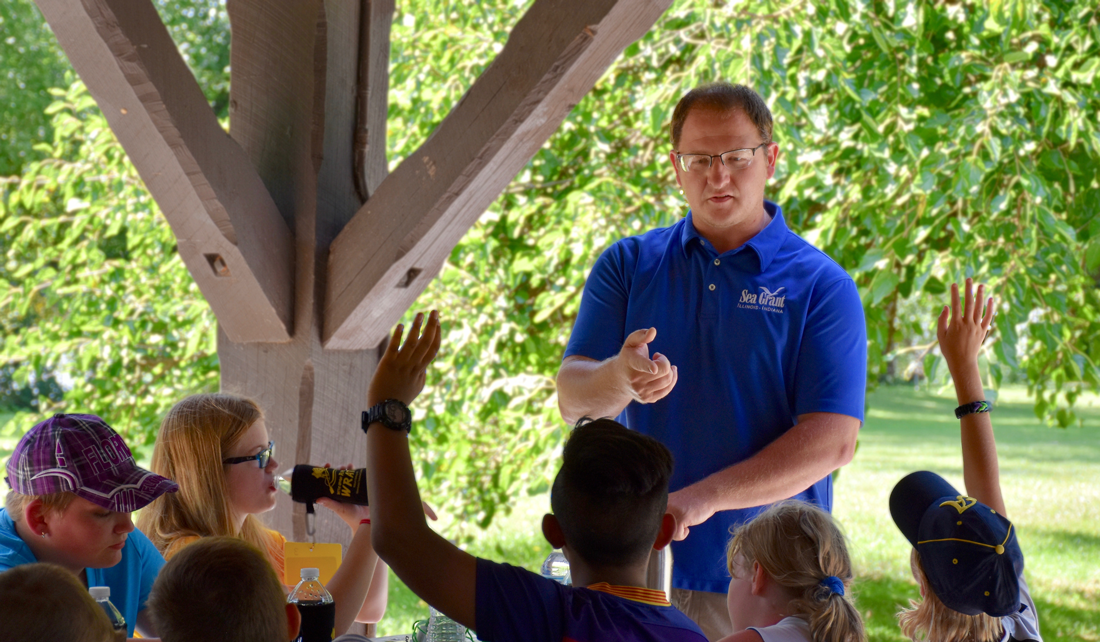
If the next generation of young people is going to care for our environment properly as they grow older, then they need to learn more about local waters and how to protect them, and that is one area where Illinois-Indiana Sea Grant (IISG) hopes to make a difference. As part of our education and outreach efforts, Jay Beugly, an aquatic ecologist with IISG and the Purdue University Department of Forestry and Natural Resources, works with local schools to teach students about everything from water quality and macroinvertebrates to fish and other aquatic wildlife populations.
In this new video, Mary Cutler, a naturalist and environmental educator with Tippecanoe County Parks and Recreation, talks about working with Beugly to teach learners of all ages about the health of the Wabash River. In August, fifth-graders from Battle Ground Intermediate School participated in the Battle Ground River WRATS (Wabash Rafting with Adventurous Tomahawk Scientists) program. The students took a rafting trip from Mascouten Park to Fort Ouiatenon, learning about the history, geography, wildlife and water quality of the Wabash River along the way. Cutler, Beugly and other scientists completed fun, educational activities with the students to finish their rafting day.
“We’re so fortunate over the years to have partnered with Sea Grant, and specifically with Jay Beugly, to extend some of the environmental outreach that connects to tributaries, larger waterways and the fishery populations in our community,” Cutler said. “Through the expertise of Jay and some of his other colleagues, they’ve brought information about how the river health is reflected in the populations of the macroinvertebrates and the fishes that we find in those small tributaries and the larger waterways.”
If you would like to connect with IISG about educational opportunities for K-12 students, please contact Education Coordinator Terri Hallesy.
Illinois-Indiana Sea Grant is a part of University of Illinois Extension and Purdue Extension.
Writer, Videographer: Hope Charters

